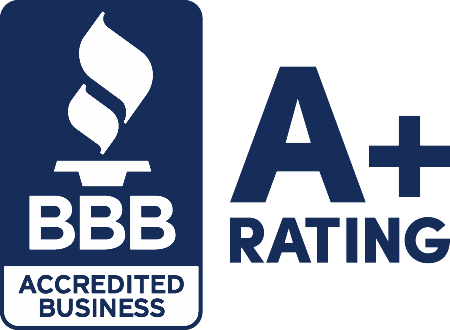But before we get to the content on each section, let’s first establish the kind of investments that usually require business plans. The following expenditures are not only large, but they will also take significant time to produce results. Thus, the bank needs as much evidence as possible to believe the potential borrower knows what they are doing.
What Are Some Investments that Might Require Business Plans?
Product Development
You have an idea for a new product, but you lack the funds to develop or distribute it on a mass scale. Luckily, business plans for product development have a high chance of approval. For many successful businesses, investing in product development was their first significant step towards the big leagues. Ziver Birg, the founder of Zivelo, which sells customized electronic kiosks to banks, airports, and retailers, told Entrepreneur in 2015 that quality design is the best investment you will ever make.
However, financial institutions may be less enticed by products that will only bring short-term success. They want to see products that will grow your business so dramatically that you now have the means to develop more products with just as much potential. In other words, your business plan must illustrate that this product is merely the first of several game-changing initiatives you have in store for the future.
Real Estate
Financial institutions are well-aware of the role location plays in the success of a restaurant, retail store, hotel, or virtually any brick-and-mortar business. In these industries, location is often the deciding factor that separates the winners from the losers. The right location can offset higher prices or even lower quality products.
But anything this important isn’t easy to find. For this reason, you must have extensive research to support your claim that this particular location makes sense for your industry and target market. Far too often, business owners ask institutions to finance properties that offer little benefits outside of an upscale, busy neighborhood or more physical space. You must be as detailed as possible in your argument. What kind of businesses can you find nearby? Can you prove that anyone outside of your local community has even heard of your business?
New Equipment
Expanding businesses often need new equipment to serve more customers and maintain the quality of their products. The challenge is to prove that your desired equipment is truly ALL your business needs to expand. This equipment must also be an asset for growth, as opposed to only keeping your business alive.
If the equipment is noticeable expensive, the institution will expect sufficient proof of its necessity. For example, the rapid advancement of technology has countless businesses wasting money on sophisticated gear they don’t need. Additionally, you should probably inform the institution that you are making a conscious effort to reduce your other operational expenditures or buy additional pieces of equipment at discounted prices due to the magnitude of this expense.
Now we are ready to layout the expected content for each section. Keep in mind that individual parts can be more than one page long. But as for the total amount of pages in the entire business plan, shorter is usually better than longer.
Let’s start at the very beginning:
What Sections Are Included in a Business Plan?
1. Cover Page and Table of Contents
Your cover page should consist of your business’s name, logo, and contact information. A table of contents denotes being organized, which is a crucial attribute of any successful business owner.
2. Executive Summary
The first real page of your business plan should include a brief but enticing mission statement. In addition to outlining what your business does, the Executive Summary should give the impression that your business is on a path to tremendous success. This is the first page your bank will see, so it needs to create interest. After all, you are trying to sell your business to them. If you’re not sure how to do that, you might want to wait until you’ve finished the rest of the business plan to draft your mission statement.
After the mission statement should be a description of your products or services, followed by a layout of your business’s ownership structure. Lastly, develop a summary of what you plan to do in the future if you receive funding. Remember not to get too in-depth with any part of your Executive Summary. You will be providing much more detail later on.
3. Company Description
This ambiguously labeled section begins with vital information such as your business’s registered name, the addresses of all physical locations, and key people’s names in the company. You can finish off with your company’s history/origin and how it relates to your business model and products/services.
4. Market Analysis
Unlike the previous section, this section asks you to do precisely what its name denotes. You will describe your industry, how your business will attract and satisfy your target demographic, and how your business will compete with virtually any other operation that sells the same products or services. A decent amount of space should be devoted to your most significant or most similar competitors. You can explain who these competitors are, what they do well, and what you will do even better than them.
5. Business Goals
Up until now, you’re probably wondering when you’ll get to talk about the funding you are looking for. That point is right here, where you’ll specifically outline your business’s short-term and long-term goals as well as how you plan on achieving each one.
This is also the section where you explain why a small business loan (as opposed to other methods of financing) is the most sensible way to finance your investment and how the money will help you achieve the goals mentioned above. Most business lenders favor applicants who utilize hard data to back up their claims. You should, therefore, use all the data you can to establish a direct link between this specific business funding program (amount, terms, etc.) and your projections (i.e., “50% increase in sales over the next two years”).
6. Organization and Management Structure
This is essentially a breakdown of every significant employee’s responsibilities, specifically managers and supervisors. Then, provide an analysis of your business’s legal structure (sole proprietorship, corporation, etc.), the percent of ownership that each owner possesses, and each owner’s role in the company. You will also describe each owner’s relevant experience, your board of directors, and the employees mentioned above.
7. Products or Services
It’s time for you to go into detail about the products or services you currently sell as well as those you plan on selling. You should explain what your products or services do, how much they usually cost, and the kind of people who regularly purchase them. In the ideal event that you receive an increase in orders, you should explain how you plan on filling them.
Earlier, you touched on why your products or services are better than those of your competitors. In this section, you should do the same but with much more detail. In addition to, say, overall quality, you could discuss why you do a better job of fulfilling your target demographic’s needs or catering to a broader demographic with more purchasing power. This section should also describe any current or pending copyrights, trademarks, or patents related to your products or services.
8. Marketing and Sales Plan
This section’s central purpose is to lay out your strategies for accomplishing two things: persuading your target demographic to purchase your products or services and developing loyalty within these customers so they will make more purchases in the future. Marketing and sales plans are what sets a business apart from its competitors. Therefore, you should use this section to emphasize the unique elements of your business model and explain why these elements give you a competitive edge.
Since a great deal of this section revolves around your competition, it would be wise to carefully research your biggest competitors’ marketing and sales plans before drafting. Anything that differentiates your strategies from your competitors’ should be made clear, even something as seemingly small as ad copy.
9. Funding Request
This section goes hand-in-hand with the next. You will outline your current and projected financial needs for the next three to five years or the duration of your desired small business loan. Forecasts should include the budget you intend to maintain once you have received funding. Since you are most likely applying for a bank loan of considerable size, it’s probably best to go five years into the future in regards to financial needs, even if your desired small business loan will only last three years.
10. Financial Projections
Aside from the Executive Summary, this is perhaps the most critical part of your business plan. It should start with previous and current income statements, balance sheets, and cash flow statements. Your desired business loan requirements should show you how far back the bank wants you to go.
You will then explain how your business will generate enough profits to pay off the debt and simultaneously grow your business. Like the previous section, your projections should span at least three years. And the future numbers should assume that you have obtained your desired loan. Projections will include monthly or quarterly sales, expenses, profits, and overall cash flow.
Your goals should be a careful mix of accuracy and optimism. The latter is perfectly justifiable if you can back it up with data and acknowledge the risks of taking on so much debt. Your business lender will want to see that you’ve thought about these risks and developed realistic solutions.
11. Appendix
The appendix is for any information or documents that you couldn’t fit in the other sections. Examples include resumes of significant employees, equipment leases, permits, contracts, letters of recommendation, and your personal and business credit history. Yes, that’s a pretty long list. This is why many loan applicants begin their appendixes with a table of contents.
And that’s it! Your business plan is complete.
General Content Tips
Here are some best practices to follow regarding your content’s tone and overarching theme:
Don’t Be Too Optimistic
Odds are, the loan officer from your bank has previously worked with numerous borrowers from your industry. Therefore, he or she will likely be able to tell if your projections or current estimates are inaccurate. For example, if your business plan features sales projections significantly higher than your most similar competitors, the loan officer will know you are not realistic. The goal is to evoke the right mix of optimism and realism. This must entirely be acceptable for what your research on your industry has told you.
Don’t Be Too Technical
When it comes to projections, your loan officer will likely appreciate a data-supported explanation. Your projections should always be backed up by statistics and possibly even graphs or charts. But this doesn’t mean you have to be especially technical in the other sections. Using too much industry jargon and attaching technical aspects to every element of your business will only confuse the loan officer and steer him or her away from the business plan’s main points.
Nail the Executive Summary
Your Executive Summary is your opportunity to show that your ideas are serious and substantial. It’s also an opportunity to show that your business is extraordinary. Think of it as an extended version of your elevator pitch, which is supposed to make you stand out. So, when writing your Executive Summary, you might want to ask yourself, “Why should the bank finance my business instead of my competitors?”
Proofread!
With so much content on your plate, you can almost guarantee that your first draft of your business plan will be laden with typos and other errors. You might have to re-read the whole thing several times before you’ve corrected every single spelling, punctuation, and grammatical mistake. After all, a healthy business plan shows attention to detail. How detail-oriented can you be if you forget to proofread?
And while it’s entirely up to you to compile the information for your business plan, it’s completely acceptable to hire professional help for writing and editing. Plenty of applicants have hired professional copy editors and proofreaders. They’ve even hired business plan writers to ensure their business plans effectively communicated their main points. This probably won’t be the only time you have to write an Executive Summary or at least a Marketing and Sales plan. If you enlist the services of a professional, you will always have a reliable template to follow.













